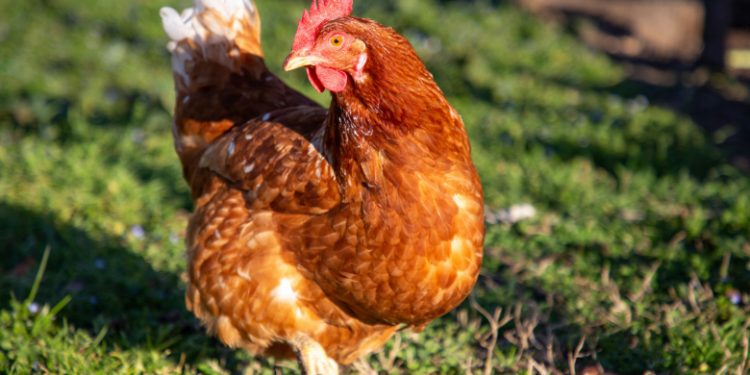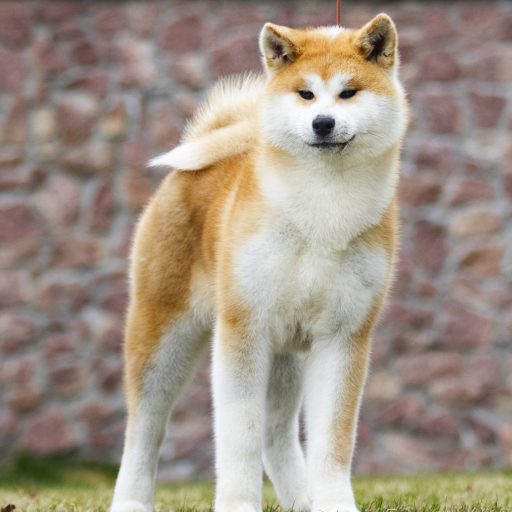The red hen is the champion of layers. Over the many crosses that gave birth to it, the red hen has developed uncommon productivity and robustness. This is the reason why it is the most widespread hen both in industrial farms and in private homes. She is also called the farm hen.
Physical peculiarities
Coming from different lines, the red hen or free-range hen does not have really standardized physical characteristics. Like many “F1 hybrid” crossbreeds, there are hundreds of different varieties of red hens (Warren, Bovans, Lohman, ISA Brown, Goldline, etc.) with as many physical particularities.
Egg size: 55/60g. Shell cream-colored, sometimes almost brown.
Plumage: dark red to light red, cream with a few white feathers on the tail.
Eyes: orange-red irises.
Beak: small, arched, horn color or darker.
Crest: simple or curly, quite small, centered on its head, red in color.
Chest: small.
Mumps: red, small, like barbels.
Tarsi: fairly long and thin, horn-coloured or yellow.
Behavior and character
Red hens have a very curious nature and will certainly entertain you with their antics. They are ideal hens for new breeders, especially families with young children.
They are very friendly and easy to tame. This chick will be happy to eat out of your hand as soon as she gets to know you.
If you are looking for a hen that lays all year round and is easy to raise, the red hen is definitely the one for you. Bred for their docility, they are very friendly and confident gallinaceans that will follow their owner everywhere. Of all your hens, she will always be the first to come running to greet you. So much so that this jovial temperament could put her in danger in a totally free environment or she could wander outside the boundaries of your garden.
Feed
Hybrid breeds like the red hen were bred to lay large amounts of eggs while only consuming small amounts of food. This makes them cheaper to feed than other breeds, especially old hens. They therefore have an excellent feed to spawn ratio, although due to the huge amount of eggs they lay, their feed can become very important to enable them to maintain this high production.
Allow about 150 grams per day and per hen, of a mixture of classic cereals (wheat, sunflower, corn…) and protein crops (oats, soybeans, pitch…), without forgetting to add a part of calcium to form beautiful shells. You can also opt for special pellets for layers.
Reproduction
It’s not a particularly good brooder. A red hen will not necessarily have the natural reflex to hatch her eggs, even fertilized ones. Plan to invest in an electric incubator if you want her to have babies.
On the other hand, know that the sex can be determined by the color of the down during the first days of a chick from a red hen. Ask the breeder to find out which rooster or hen had the darkest plumage and how to recognize it.
Health
Hybrid hens are ideal birds for beginners, they are usually vaccinated (which is not always the case for old breeds) and are generally hardy.
To keep your red hen healthy, the most important thing will be hygiene. Make sure the litter is clean by renewing the wood shavings regularly and deworm your hen once a year (preferably in the spring), to keep her intestine free of any parasites. Unfortunately, the red hen does not have a very high life expectancy. The many crosses and the resulting genetic selection do not work in its favor. Industrial breeders rarely keep hens for more than 3 years, so choosing individuals for their longevity does not make sense from this point of view.
Place of life
As a hybrid, the red hen does not need a lot of room to live. She is quite ready to share her perch with other hens in order to keep warm at night. But your farmer will of course be delighted to be able to frolic in a large enclosure if you allow her. The most important thing is to have a chicken coop that is fairly well insulated from drafts and humidity, to prevent your chickens from getting sick.
Do not forget that your garden or the pen in which your hens live must be fenced. The red hen is not necessarily aware of the danger and could quickly end up on the road or at your neighbor’s house if there is no obstacle to prevent it. Likewise, she is quite vulnerable to predators, make sure she is safe at home.












